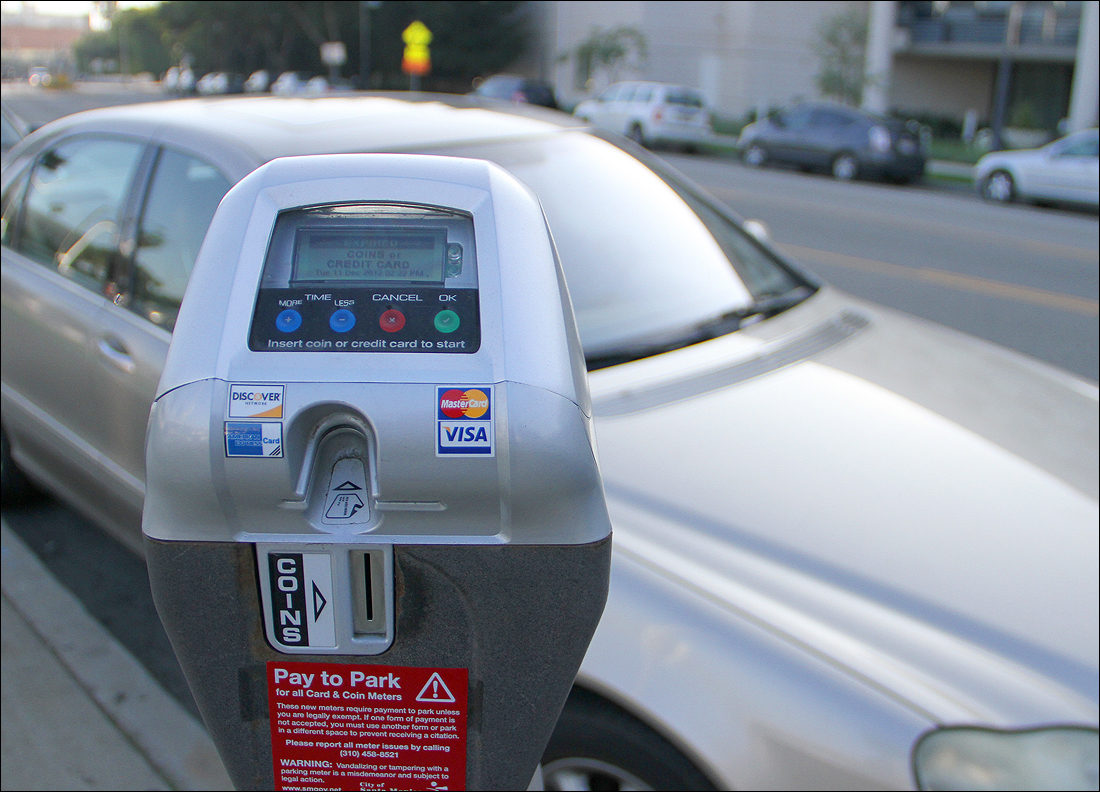
BAY STREET — New technologies come with a learning curve and Santa Monica's "smart" parking meters are no different, but that's a hard pill to swallow when you're on the wrong end of a $53 parking ticket.
That's where San Francisco resident Lisa Steinborn found herself on Nov. 20 when she returned to her car on Bay Street after a walk and found the telltale envelope on her windshield.
The time was 12:30 p.m., and she'd paid $10 to keep the spot for another two and a half hours.
"You have a digital meter. That's supposed to be an upgrade from analog," Steinborn said.
Steinborn is not the first to have a run-in with the updated parking meters, which have been in place in Santa Monica since last year.
A friend who lives in Santa Monica has also had time mysteriously disappear off the clock, Steinborn said. Another woman contacted the Daily Press several months ago to report problems with the Parkmobile smartphone app that landed her with a pricey ticket as well.
City officials have been hearing about it, too.
"We have occasional complaints about meters resetting before the paid time expires," said Don Patterson, assistant director of the Finance Department. "We continuously track complaints and work with our staff and meter company to resolve any known issues to keep the error rate as low as possible."
Staff calculated the error rate over two months at roughly 1.7 percent, considerably lower than what they were seeing with the previous generation of parking meters.
Assuming that error rate stayed steady across an entire year, however, that's 200,000 errors out of the 12.2 million transactions completed at Santa Monica's parking meters.
"The new meters have a significantly lower error rate than the old meters. The old meters reset frequently if a heavy truck or bus went buy," Patterson said.
The new meters have their weaknesses as well.
Each meter comes equipped with a rechargeable battery that gets powered by a small solar panel on the street-facing side of the device. The machines can get more error-prone when the battery runs low, something that happens more frequently to meters sitting under Santa Monica's beloved urban treescape.
Heavy activity next to meters can also reset them, as well as people trying to "trick" the meter, Patterson said.
He didn't want to describe exactly how one might do that, although a quick Google search reveals all.
"What we've noticed more recently is low batteries. We will be formalizing the replacement schedule," Patterson.
That's little comfort for someone like Steinborn, who is out $63 between the amount she paid and the ticket she must now dispute.
Technically, it's easier for her to win her case with the new meters, which keep records of transactions, versus the older models which did not.
That doesn't save any time, however.
"This has taken a couple of hours of my life, but when something ticks you off, you have to do something about it," Steinborn said.
City Hall spent $4.5 million on the installation of the 6,100 parking meters last year.
Each spot has a sensor installed underneath the asphalt which uses a magnetic field to determine whether or not a vehicle is occupying the space. The meters transmit that information to a central system so that parking professionals know how spots are being used throughout the city.
The sensors also tell them when someone has left a spot, at which point they reset the meter to zero, canceling out the remaining time on the meter. That led to a wave of articles and news reports across the nation calling the new meters "greedy."
One Santa Monica resident also turned in a $1.7 billion complaint against the city for the new meters, which she said were causing her to become ill.
Despite the issues — real and perceived — with the meters, most parking professionals are getting behind them because they really do work better and provide information that makes parking more efficient and easier on the patrons, said Carey Jones, chair of the International Parking Institute, an association of parking gurus.
"If we can make one space serve three, four or five patrons a day, it makes us much better managers of the resource," Jones said.
The new meters also offer multiple forms of payment, including mobile app, credit card and the traditional coin, all of which aims to make life easier on the person who needs the space.
"Parking is a people business," Jones said. "You can add all the technology you want, but it remains a people business. All we want to do is deliver the customer a better experience, and this technology helps us do that."
ashley@www.smdp.com









